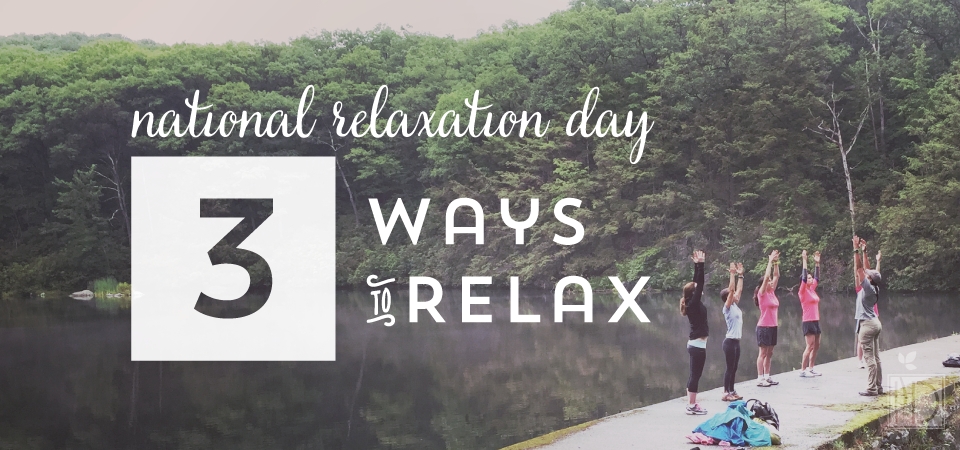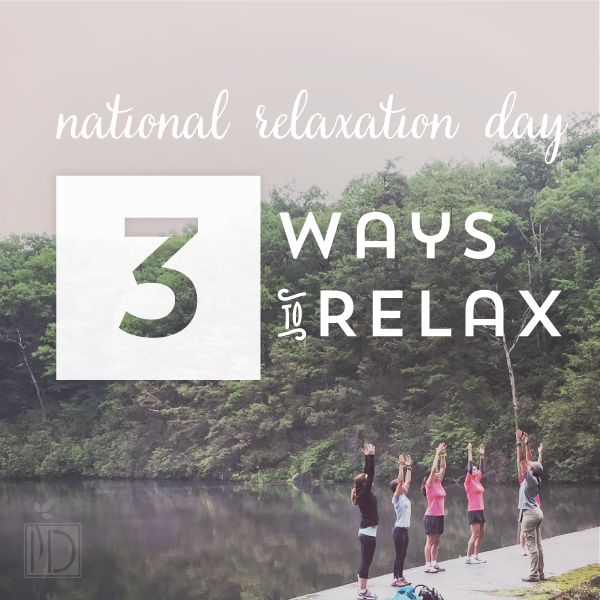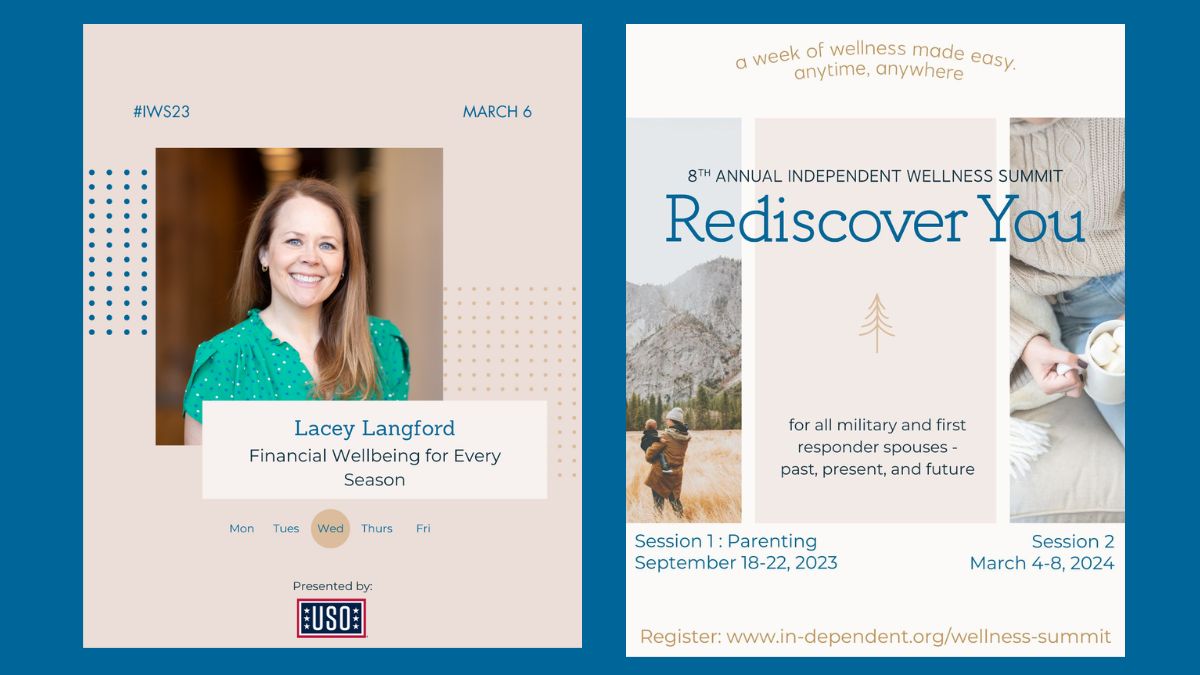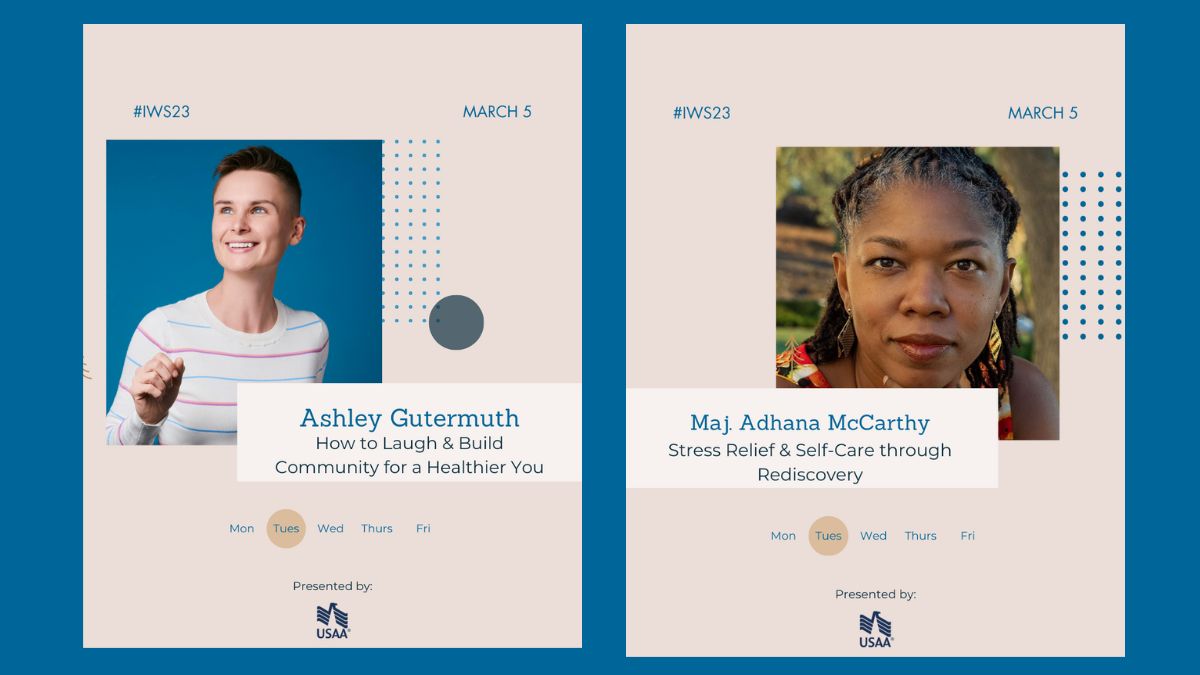relaxation day pin
Summer is coming to an end – PCS season is wrapping up, kids are going back to school, long days are getting shorter, and the hustle and bustle of this new season is beginning. Annually, on August 15, National Relaxation Day can’t seem to come at a more perfect time.
Research proves that daily stress can cause a whole host of adverse health problems. The most common symptoms include irritability, anxiousness, lack of interest, fatigue, feeling overwhelmed, and depression. These symptoms can lead to decreased immune function, decreased digestive system functions, high blood pressure, and heart disease, to name just a few. Earlier this year, the American Psychological Association released a report, titled “Stress in America.” The study reveals that 75% of Americans report experiencing at least one symptom of stress in the past month. Forty-two percent say that they’re not doing enough to manage stress, and 20% say they have not done anything to manage their stress.
There’s no better time than right now to relax – for your health. Learning to relax can reduce your stress and even reverse stress-related health problems. With that said, believe it or not, relaxing is something that takes practice to perfect. Here are a few tips that work for me.
Breathe
One of the most overlooked ways to reduce stress is the simple act of breathing.
Your body has a natural reaction to stress. When stressed, the sympathetic branch of your autonomic nervous system goes into overdrive, causing increased heart rate and shallow breathing. By slowing down and practicing some deep breathing techniques, you can engage your parasympathetic nervous system, and reduce anxiety, depression, and blood pressure, all while boosting your immune system and level of happiness. Richard Gevirtz, PhD, an expert in heart rate variability research and training, recommends practicing deep breathing for at least 10 minutes each day for optimal benefits and lasting effects. If you are new to deep breathing, there are some apps that can help you to get started. Some that I’ve found helpful and have good reviews are Breathe to Relax, BioBreathing, and MyBreath Lite. Once you’ve mastered the timing of your breaths (inhaling deeply with your diaphragm, briefly holding your breath, and then slowly exhaling), you can quickly move into relaxation breathing at any point in your day.
Get Outside
A great place to breath deeply is outside. A recent article in The New York Times, “How walking in nature changes your brain,” reports that a simple walk outside (a park, a quiet street with trees, or a favorite trail) can reduce one’s tendency to focus on the negative aspects of his or her life (didn’t get the promotion, husband is deploying, kids won’t stop whining). Another article in the New Yorker takes this idea a step further by claiming that even something as simple as looking out a window can positively affect mood and healing. If you are able, get outside and have a relaxing walk with your dog, go on a run or a family hike, have a picnic, or take a nap outside. After all, it is proven that breathing in phytoncides (or scents) of trees can increase your good “natural killer cells” and strengthen your immune system. Richard Louv, who coined the term “nature deficit disorder” and author of The Nature Principle and Last Child in the Woods, suggests that when we are outside, we feel more alive. We are biologically wired to thrive in the outdoors. Adults and children alike can benefit from being outside and should enjoy nature together. For some ideas of other outdoor activities you and your family can enjoy together, check out this article.
Exercise
For some people, the first thing that comes to mind when you say relaxation is not exercise. However, experts have come to realize that the two frequently go hand in hand. Raising your heart rate for a period of time reduces stress hormones (cortisol and adrenaline) and increases endorphins (the feel good hormones). Endorphins are largely responsible for the amazing runner’s high you might feel after a long run, a sweaty spin class, or an hour of challenging poses in yoga. Additionally, as you get in better shape, you begin to feel better. Your mood improves, you have a new sense of pride, and your self-confidence skyrockets. It’s an incredible positive feedback loop that’s good for your mind and body.
Other types of exercise that can help you relax are called autoregulation exercises. Coincidentally, deep breathing is a form of autoregulation exercise. As you practice deep breathing, your respiratory muscles learn how to relax. Then, in stressful situations, you can quickly use muscle memory to get to a place of calmness. Similarly, progressive muscle relaxation can teach tense muscles to relax and lose the stress. These exercises are best performed in a quiet place where you can take the time to concentrate on tightening specific muscles, holding the contraction, and then completely relax that specific muscle. For instance, you can start with your forehead – wrinkle your forehead, hold for 20 seconds, and relax. Then, shut your eyes as tight as you can, hold for 20 seconds, and relax. Move to your mouth, neck, shoulders, and keep going all the way down to your toes. Once you master this technique, you can quickly relieve daily stress. And finally, the last autoregulation practice incorporates having some kind of emotional support. This can be achieved through having a strong social and emotional support system, or even by taking some time to work through your problems with journaling.
These are my favorite (and scientifically proven) ways to relax, but everyone feels things differently because everyone relaxes differently.
Please don’t wait until each August 15 to devote time for relaxation. Taking some time out of every day for yourself is good and necessary for your overall health and wellbeing. You will thank yourself for it, and so will your family.
What are your favorite ways to relax?





